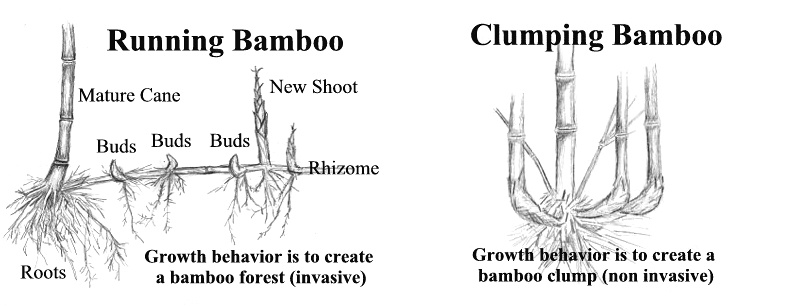Bamboo Taxonomy
When most people think of bamboo, they immediately think of this monstrous, invasive plant that wants to take over the world! Other immediately think of bamboo as the food that the giant panda eats, while still yet others think back to their days of youth when they fished with a bamboo pole.
Anyways, no matter what visions the name bamboo incurs, and contrary to popular belief, bamboo is NOT a tree. Bamboo in fact is a member of the grass family, with at least 90 genera and over 1200 species that grow throughout the world. From tropical regions of South America, the frigid regions of Northern China to the arid regions of India, bamboo it seems grows almost anywhere.
Scientifically, bamboo can be classified as follows:
KINGDOM: Plantae
DIVISION: Magnoliophyta
CLASS: Liliopsida
SUBCLASS: Commelinidae
ORDER: Cyperales
FAMILY: Poaceae
SUBFAMILY: Bambusoideae
TRIBE: Bambuseae
SUBTRIBE: bambusinae
In addition to that, bamboo is then broken down into two categories based on it’s rhizome structure, or roots. Leptomorph bamboos are your typical running bamboo, and pachymorph bamboos are your clumping bamboos. Bamboos are also categorized based on their species type, such as Bambusa, Chusquea, Dendrocalamus, Fargesia, Phyllostachys, Pleioblastus, Pseudosasa, and Sasa to name a few.
The various bamboo varieties also display a variety of colors, from brilliant greens to alternating yellow and green strips on the culms to variagated leaves, bamboo can be a striking speciman in any landscape. Bamboo also vary greatly in size, some barely growing more than six inches tall to some that grow more thanone hundred feet tall, as well as varying widths, from the size of a pencil to more than eight inches in diameter!

